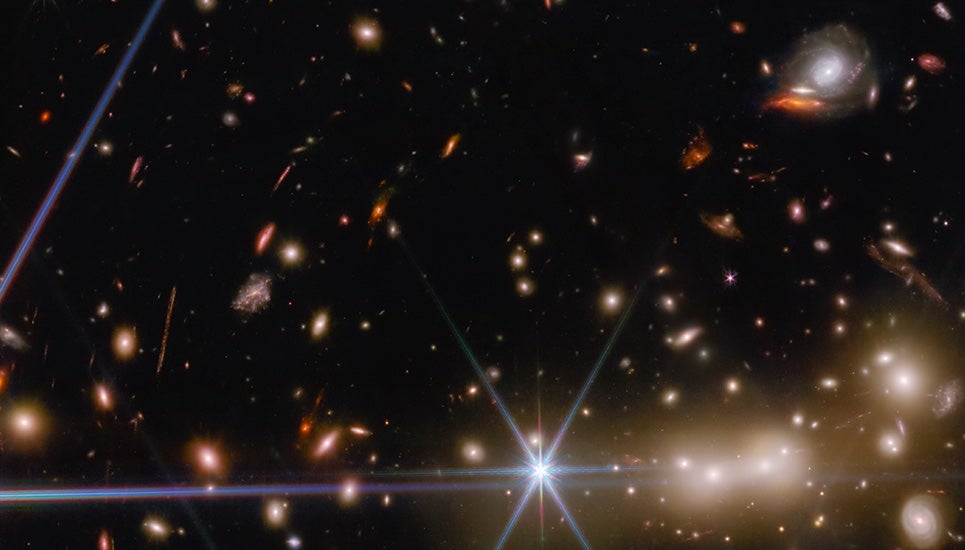New Nasa James Webb telescope picture shows galaxy forming as the universe is just beginning
The more powerful optics of the Webb telescope continue to shed new light on older astronomy discoveries

The James Webb Space Telescope has peered at another former target of the Hubble Space Telescope, this time revealing surprising details in a distant galaxy as it existed shortly after the big bang at the dawn of the universe.
Nasa released the new Webb telescope image Wednesday morning in a blog post that also featured an interview with the scientists behind the observation, astronomer Dan Coe of the Space Telescope Science Institute, in Baltimore, Tiger Yu-Yang Hsiao, an astronomer at Johns Hopkins University, and University of Texas at Austin astronomer Rebecca Larson.
The target of the scientists ongoing research is MACS0647-JD, a distant galaxy billions of light years away first discovered by Dr Coe 10 years ago using the Hubble telescope.
“With Hubble, it was just this pale, red dot. We could tell it was really small, just a tiny galaxy in the first 400 million years of the universe,” he said. “Now we look with Webb, and we’re able to resolve TWO objects! We’re actively discussing whether these are two galaxies or two clumps of stars within a galaxy.”
“It’s really interesting that we see two structures in such a small system,” Dr Hsiao added in a statement. “We might be witnessing a galaxy merger in the very early universe.”
MACS0647-JD isn’t immediately noticeable in the sea of gem-like galaxies seen in the newly released image. Scientists cannot view such distant galaxies directly even with the powerful Webb telescope, and so instead they use the gravity of a massive star cluster in between Webb and MACS0647-JD to magnify the image of the background galaxy, a technique known as gravitational lensing.
In this case, the scientists used the gravity of a star cluster known as MACS0647 as the “lens” to study the galaxy MACS0647-JD. The lensing process makes the background galaxy show up in three different locations in the main image, which are indicated and then blown up in a sidebar.
“Due to the gravitational lensing of the massive galaxy cluster MACS0647, it’s lensed into three images: JD1, JD2, and JD3,” Dr Coe said. “They’re magnified by factors of eight, five, and two, respectively.”
Studying such extremely distant galaxies can help scientists understand how the very first galaxies formed and evolved, and from that better understand how our own galaxy came to exist, and what its ultimate destiny may look like.
The Webb telescope was launched in December 2021 after more than 20 years of development designed to enable it to study just these types of extremely distant objects, and according to Dr Larson, this is just the beginning.
“I think my favorite part is, for so many new Webb image we get, if you look in the background, there are all these little dots—and those are all galaxies! Every single one of them,” she said in a statement. “And this is not a deep field. This is not a long exposure. We haven’t even really tried to use this telescope to look at one spot for a long time. This is just the beginning!
Subscribe to Independent Premium to bookmark this article
Want to bookmark your favourite articles and stories to read or reference later? Start your Independent Premium subscription today.

Join our commenting forum
Join thought-provoking conversations, follow other Independent readers and see their replies